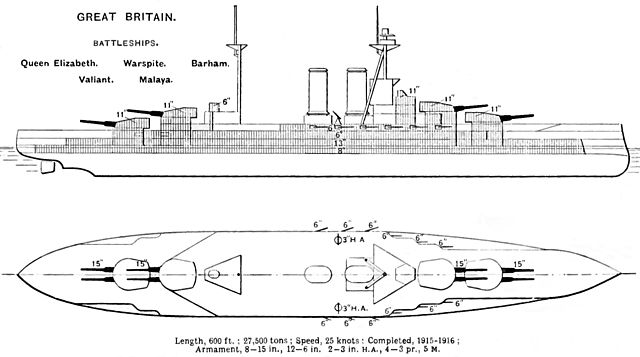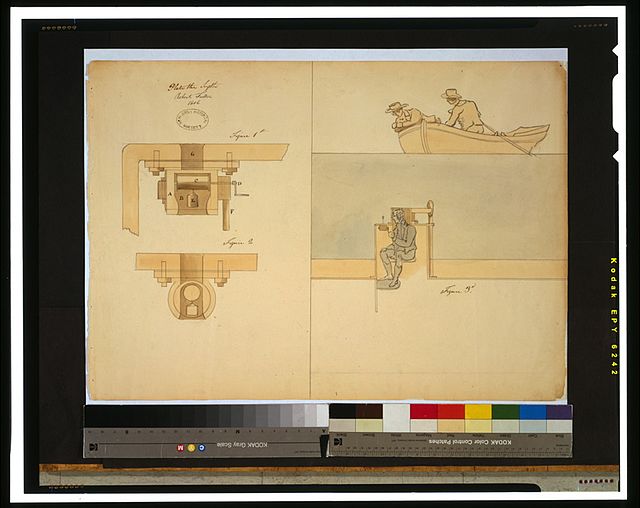A conning tower is a raised platform on a ship or submarine, often armoured, from which an officer in charge can conn the vessel, controlling movements of the ship by giving orders to those responsible for the ship's engine, rudder, lines, and ground tackle. It is usually located as high on the ship as is practical, to give the conning team good visibility of the entirety of the ship, ocean conditions, and other vessels.
Armoured cylinder of USS Massachusetts's (BB-2) conning tower during construction c. 1892
Queen Elizabeth-class battleship armour layout, with conning tower having the same heavy 11 inches (28 cm) armour as the gun turrets while the bridge is unarmoured
Bridge fairwater of USS Pampanito The boat's conning tower is more of a "conning tube", as it lies parallel with the main pressure hull. Just over 6 metres (20 ft) long, with a diameter of roughly twice the distance between the weather deck and the bottom of the number "383".
Bridge fairwater of the Polish submarine Orzeł (in 1940)
A submarine is a watercraft capable of independent operation underwater. It differs from a submersible, which has more limited underwater capability. The term is also sometimes used historically or colloquially to refer to remotely operated vehicles and robots, as well as medium-sized or smaller vessels, such as the midget submarine and the wet sub. Submarines are referred to as boats rather than ships irrespective of their size.
US Virginia-class submarine underway in Groton, Connecticut, July 2004
Russian Akula-class submarine of the Northern Fleet, in 2008
An early submersible craft, built by Cornelis Drebbel, propelled by oars
1806 illustration by Robert Fulton showing a "plunging boat"








